
Humans were once nomadic - a migratory species that roamed the surface of our planet, following the paths of resources and tracing the patterns of our environment. Since then we have settled down. In 2008 (and for the first time in our history) most of the world’s population belongs to cities. However, with a new age of digital and spatial exploration developing we have begun to re-evaluate what it means to live in a city, and what that “urban” environment can be.
Out of this World - Nomadic Tendencies...
A new type of nomadic species is being groomed to assume the role we once had. To explore, to adapt and discover. What architect’s Ron Herron and Archigram were able to imagine in the 1960s, kinetic sculptor Theo Jansen and engineers at NASA are actually constructing today. Designers and engineers are seeking out a new adaptive mobile-architecture, and once static constructions are now coming to life.
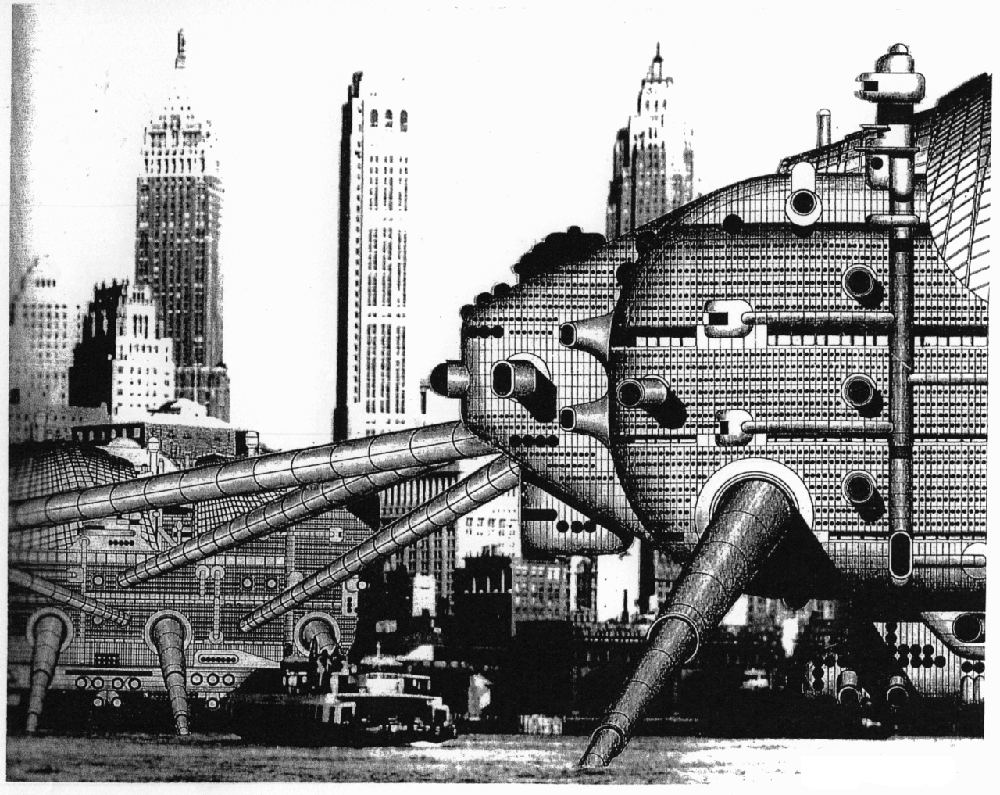
Ron Herron’s “Walking City” (1964)
Buckminster Fuller's Geodesic Dome (below) a dynamic housing model that embraced passive energy and supported quick-build construction after World War II.
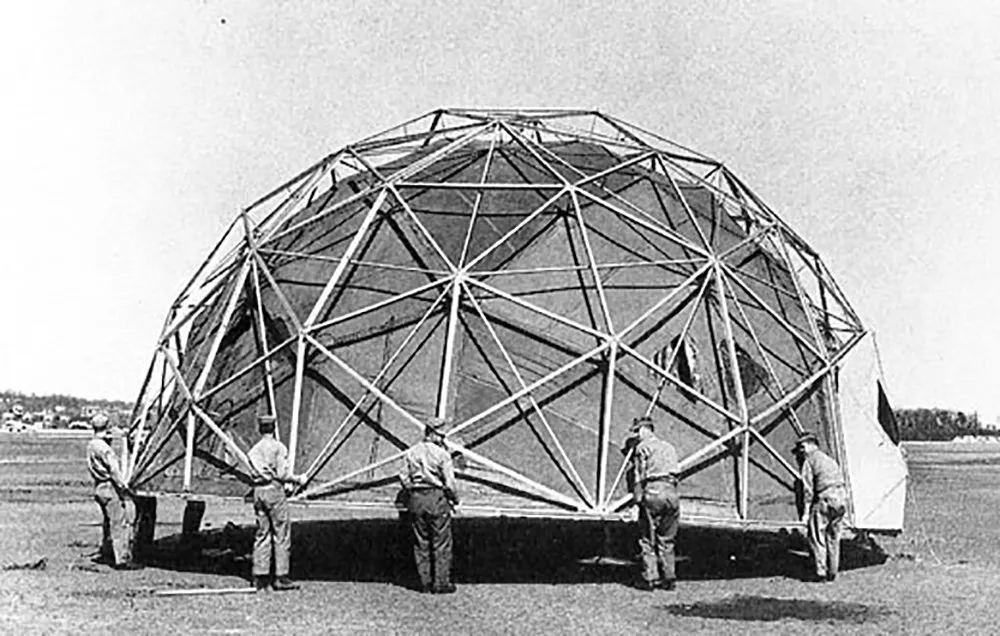
On April 12th 1961 a person observed planet Earth from outer-space. Less than eight years later, two more set foot on the moon. In this past century our concept of scale has evolved dramatically, which has in turn has had a huge impact on our built environment and the creative thinking behind it. With these broad new horizons the way we define a “boundary” is rapidly changing. If there is so much space, why should we restrict ourselves, our homes or our lives? In the 1960s, architect Ron Herron imagined a world where we would all live in massive walking creatures. Huge machines that crawled across the world’s landscape and served as gigantic transporting devices. They would drop people off through extruding tubes at various locations, while picking others up to move on to populate temporary cities. In this world, permanence is non-existent. Futuristic nomads would embrace mobile infrastructure to continuously interact with the landscapes around them. This new and strange understanding of environment can be seen in experimental architecture through the 1960's and 70's. Another group, called “Superstudio” also re-evaluated spatial habitats using this same idea of endlessness. The project "Supersurface" created a similar quality of infinite expansion and proportion.

Jansen with 'Animaris Siamesis’ in 2009. (Photo by Lena Herzog.)
Kinetic Sculptures with “Simple Imaginations”
The nomadic character of these 1960s visions are visible today in the work of the Dutch artist and kinetic sculptor Theo Jansen. Using plastic tubes, string, and lemonade bottles... Jansen has created a new type of intelligent organism. He calls his inventions “beasts” and has even developed an evolution of different "species" which he plans to release into the wild within the next few years. The artificial creatures are powered solely by the wind, and are configured to physically change their movement based on alterations in landscape.
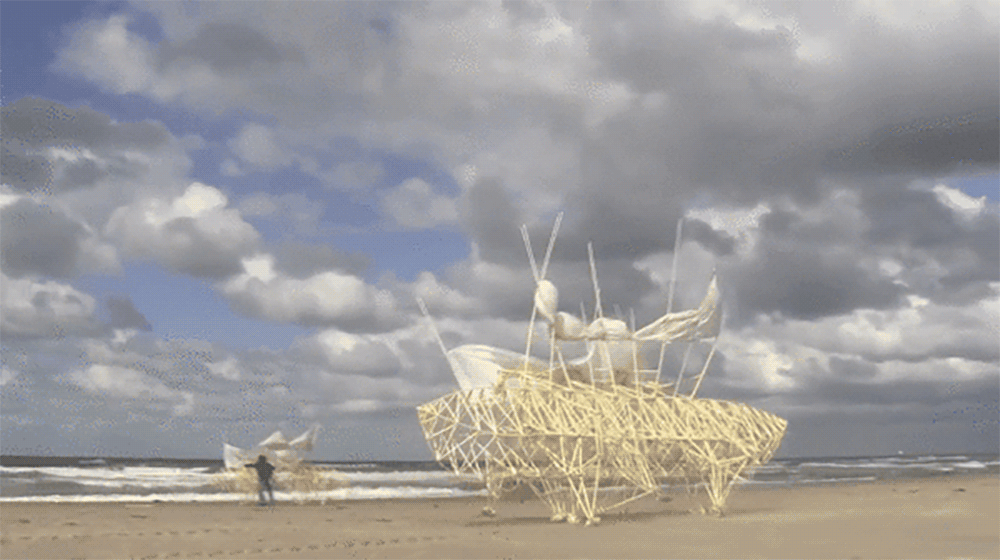
"A part of me is an engineer who wants to map the progress of mobility. Another part is an artist who wants to sculpt the earth that surrounds us, and give it shape."
Animated GIFs made via video content, here.
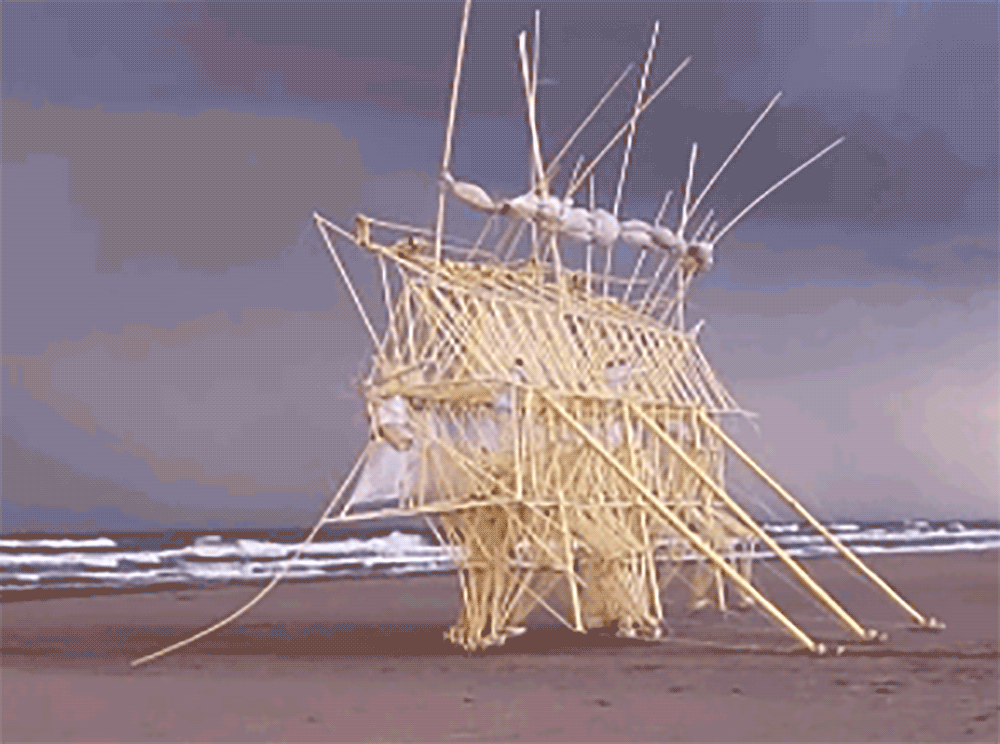
Like insects gliding across the sand, his inventions travel back and forth across their beach habitat. Jansen’s work interprets the environment and movement as a single cohesive system. He has created a “energy-free” intelligence that has the ability to react specifically to earth and water, all through the manipulation of wind. Some have the ability to store wind energy through an air pressure system within a lemonade bottle. Several species actually have "brains"... or intertwining loops of rope that compose a binary system to organize a yes-no response to weather as it changes… or what Jansen calls; “a simple imagination.” Through this layering of rope a creature can understand where it is in relation to the ocean and sand dunes. When one reaches the water, it is able to sense a change in pressure and turn back the other way. Some have "noses" that point towards the wind, and if the weather becomes to difficult to move, the nose is triggered to pound a stake into the ground to stay put until the storm has subsided. His creatures wander the beaches in herds, learning where to walk and what to avoid in order to survive.
What Jansen has created is a fascinating manifestation of natural movement, and a "new form of life". It is a new breathtaking understanding of motion, and redefinition of what a living thing can be. If wind can provoke intertwining sticks to move, think, and make an informed decision, then isn't it a living thing?
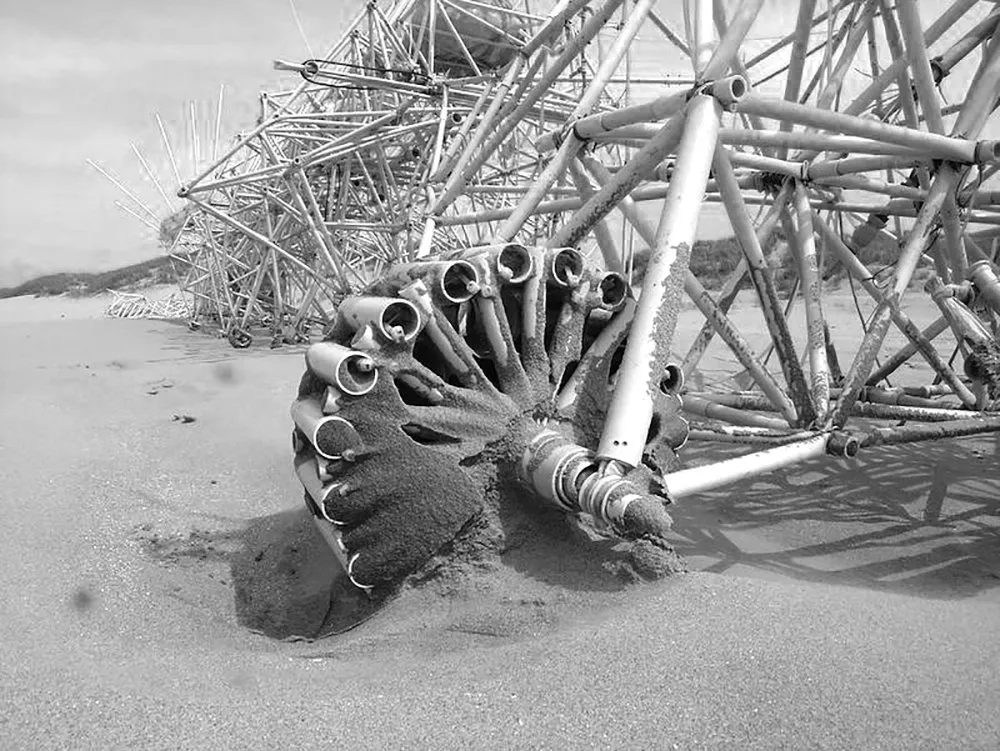
A New Frontier
To explore and discover a landscape we know nothing about, adaptation becomes essential. Another example of innovative exploration can be found within NASA. A team of engineers are currently working on a project entitled Autonomous NanoTechnology Swarm mission architecture, or ANTS.

"The ANTS approach harnesses the effective skeletal/ muscular system of the frame itself to enable amoeboid movement, effectively ‘flowing’ between morphological forms. ANTS structures would thus be capable of forming an entire mobile modular infrastructure adapted to its environment." By using a complex and adjustable tetrahedral geometry, the units can explore just about any landscape or environment. By changing shape and adjusting its center-of-mass the robot is able to move. The "tetrahedral walkers" would be able to search for resources such as water, while navigating through previously inaccessible terrain. Within ANTS is a program called LARA, or Lander Amorphous Rover Antenna. This project is meant to create a series of adjustable structures that conform to a foreign surface. There are four main types, or species that are meant to make human activity on the moon a possibility. There are "landers" that are launched structures that land and conform to an environment, "rovers" that move through a landscape collecting resources and explore, "instruments" that act as base platforms for construction, and "antenna arrays/beacons" used for observation. One can evolve into the other depending on the type of exploration needed for each mission. Similar to Theo Jansen's kinetic species, these robotic creatures continuously read and explore landscape through a repetitive adaptation.
Nomadic Cities and New Topographies
New forms of technology are emerging to shape and a new understanding of “boundary”. If these new transformable spaces could one day be occupied - how would that shape a person’s identity? Today, our identity is most commonly defined by the cities we inhabit, and the immediate environment around us. What will happen to our sense of place-driven identity if we embrace our nomadic roots once again?
Thumbnail image : a @voronoi collage based on “The Continuous Monument” by Superstudio (1969).
For more musings on science, art and architecture...